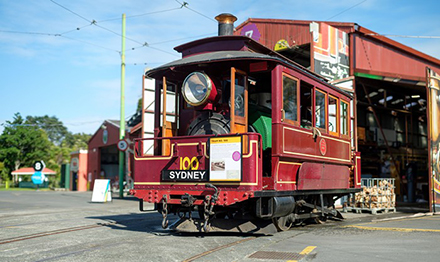Steam tram number 100 will operate on a renewable energy source made from trees at MOTAT Live Day on 20 August 2023. Developed by Scion, the biofuel will undergo its largest trial to date, which will see 250 kilograms of briquettes supplied to MOTAT to keep the little tram running all day. Source: Timberbiz
The briquettes are made using forest residues such as bark, branches, and low-quality stem wood – all woody biomass that is currently seen as a waste product in the industry.
Scion Integrated Bioenergy portfolio lead Paul Bennett says a biofuel future is essential for New Zealand to meet its global climate change commitments.
“Energy use contributes to around 90% of New Zealand’s carbon dioxide emissions. If Aotearoa is going to achieve its net zero target, it needs to address emissions from energy use.
“This is currently the most achievable target for New Zealand to reduce carbon emissions. However, it’s not a target that can be achieved only by Scion. It requires connections with the industry and the public.
“To bring biofuel to the market and successfully replace coal, the technology needs to be tested at a range of scales. This partnership with MOTAT is the ideal first step to demonstrate the effectiveness of biomass briquettes at a larger scale, with a like-minded company that wants to reduce its environmental impact.”
The MOTAT Collection Workshops is aware of the challenges to this objective when it comes to operating many of heritage collection objects that require burning coal, such as the Pumphouse and Beam Engine, steam trains and steam tram.
“It’s a balancing act between sharing with our visitors how these magnificent examples of science and technology work, while keeping carbon emissions to a minimum,” MOTAT Collection Workshops Manager Graham Anderson said. “Steam tram no. 100 has a fascinating history,” says Anderson.
Built in the United States in 1891, it was shipped to Sydney where it operated on the New South Wales Government Tramway system until 1905 when electric trams replaced steam services. It was briefly used by the private Saywells Tramway at Rockdale and then brought to Whanganui, New Zealand in 1910 for construction of the Gonville and Castlecliff Tramway Board’s electric tramway extensions to the Wanganui system.
This work was completed in 1912 and the tram was then placed in storage. It was briefly pressed into service hauling passengers between July and October 1920 when the electric tramway power supply failed. It was restored to operational condition by MOTAT in 1971, and today runs on MOTAT’s tramway from Great North Road to Motions Road.
Although MOTAT has a licence to burn coal and complies with all legislation, it is investigating options for more sustainable, clean, or cleaner, fuel alternatives. The collaboration with Scion is an opportunity to further this research.
To produce a briquette, forest residues are first dried, and their size reduced to fine particles smaller than three millimetres. These particles are then heated to approximately 100 degrees Celsius and pressed into briquettes.
For a true coal replacement, forest residues must be densified and upgraded to a heating value comparable with coal. The resulting briquettes must also be durable, meaning they can hold their shape and not break or crumble during transportation and handling.
Thermal coal’s average bulk density is approximately 700 to 800 kilograms per cubic meter. To date, Scion has achieved a density of around 550 kilograms per cubic meter with a durability greater than 91%, qualifying the briquettes as a coal replacement for medium/low process heat supply.








